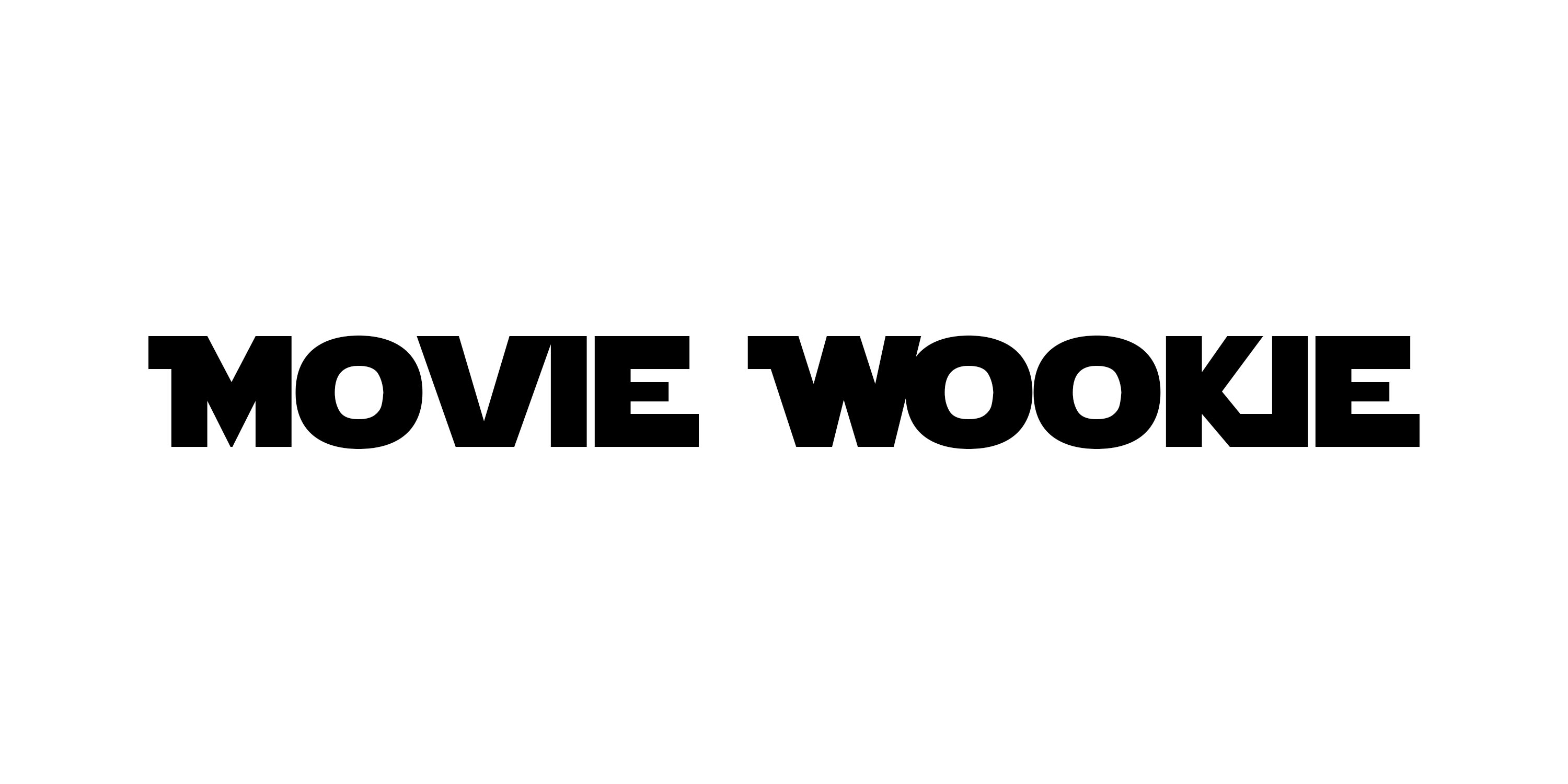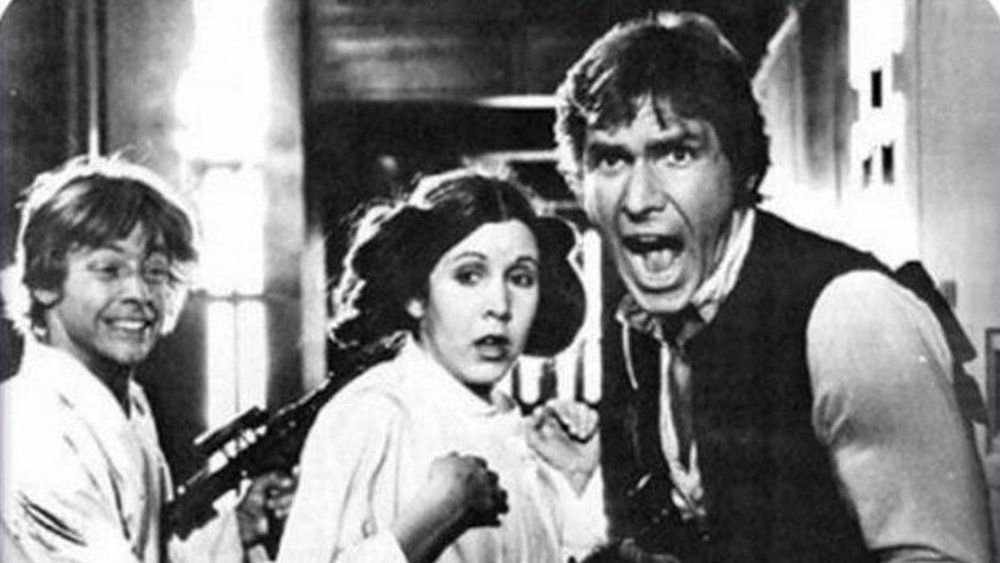When I was little, my mom excitedly sat me and my older sister down in front of the television to watch one of her favorite movies, the original Star Wars from 1977, which she had rented from the video store (back when those were still a thing). I vaguely remember seeing that awesome opening shot where the Star Destroyer emerges from the top of the frame, dominating the entire screen with its terrifying majesty. Yet me and my sister were completely disinterested. Before Darth Vader made his entrance, my older sister got up and announced that she had something to do before retreating to her room. As C3PO and R2D2 languidly roamed the Dune Sea on Tatooine, little me decided to join her.
To put it simply, I just found the film terribly boring. As a child, I loved the fast-paced action films of Michael Bay and always wanted things to be faster and more intense (which is ironically George Lucas’ most famous catchphrase when directing). I didn’t feel all that amazed watching a chase sequence where both parties were moving at a snail’s pace. I found the Stormtroooper’s assault on Princess’ Leia’s starship clumsy and unengaging. And of course I had no interest in seeing two plastic-looking robots waddle around an empty desert for half an hour.
When I grew older and became something of a film snob, I decided that Star Wars was a dumb popcorn flick that was beneath my attention. At this point, my mom had purchased the 3-disc DVD set containing all 3 films of the Original Trilogy. Whenever she felt bored, she would just put them on the television and play them on repeat. I would occasionally pass by the living room and see what was playing, shake my head in disgust thinking about how clever I was to avoid such trash, and then go watch Interstellar for the 100th time.
That all changed when the Force Awakens came out. Well, to be more precise, when the trailer for the Force Awakens came out.

I have become a bit of a Star Wars fan since, falling in love with the universe that George Lucas built and has been expanded so wonderfully by other creative voices. I braved the much-maligned prequels and found them to be fascinating stories that were frustratingly inconsistent in execution, containing the best and worst moments of the series. I read all 3 books in Drew Karpshyn’s excellent Darth Bane trilogy, and have spent hundreds of hours playing both Knights of the Old Republic games, not to mention delving into the shockingly great Clone Wars animated series from 2008. I was even the only one in my family who even bothered to see Episode IX: Rise of Skywalker in the theater, which was very well-made but wasn’t quite the epic conclusion I was hoping for.
The sequel trilogy, which was what got me into Star Wars in the first place, has become one of the most polarizing pop culture artifacts, and not all the discourse has been civilized. Many fans of Star Wars have become disillusioned, first facing the disappointment of the prequels, followed by the frustration of the sequel trilogy and a lack of interest in the new Star Wars media (at the time of writing the Obi-Wan Kenobi show is going to air its last episode next week and reactions have been mixed).
Even I, as someone who has at the very least enjoyed every single Star Wars movie, didn’t really feel like keeping up with the latest stories anymore. So I decided that it was a good time to revisit the 1977 classic to refresh my mind from all the mixed opinions of the current era of Star Wars. I scoured the Internet for an untouched version of the original film (I’m not a fan of the Special Editions) and found an incredible project known as 4K77, a group of fans who acquired the original 35mm film reels used for the film’s theatrical exhibition in 1977 and painstakingly scanned and restored it as a 4K digital copy (you can learn more about them at their official website). Me and my mom then sat down and for the first time ever, watched Star Wars together. It felt odd that she had fallen in and out of love with Star Wars long before I went through the same process. But now we were both lapsed Star Wars fans, and it was time for us to lose ourselves once more in a galaxy far, far away.

For this review, I want to treat the 1977 film as its own movie, completely disregarding anything that came afterwards. I want to review Star Wars the film, and not Episode 4: A New Hope. It allows us to go back to the simpler times, when George Lucas was still an aspiring filmmaker and all the Star Wars fans got along.
The First Step into a Larger World
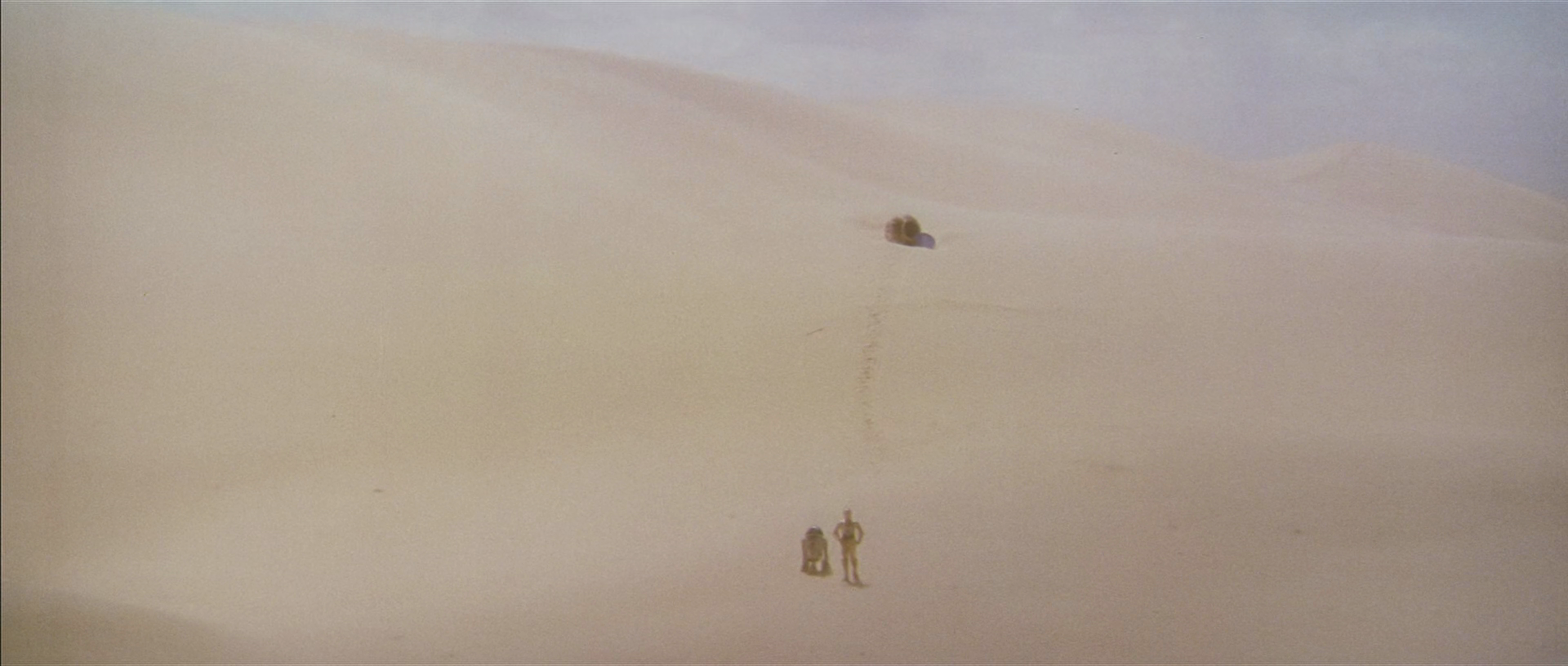
Remember how I said that I was completely bored by Star Wars as a child? Well, rewatching the film now I wish I could go back and tell that dumb kid to just hold on until the desert hobo shows up. Star Wars is a movie that starts incredibly slow, but keeps ramping up the pacing until it practically shoots into lightspeed by the third act.
Had I been more patient, I would have realized that the movie starts slowly for good reason, to immerse us into this alien universe. It is one of the greatest examples of world building in that it doesn’t rely on blatant exposition to introduce its vast and complex universe, but accomplishes this by showing the day-to-day of its inhabitants. The reason why we spend so much time following the droids wandering the desert (besides from the fact that the banter between them is actually hilarious in retrospect) is so that we understand their role as lower-class citizens in galactic society who are easily replaceable and not treated as sentient beings (despite the fact that they clearly are). We also get to truly experience how dead Tatooine is, and perhaps my boredom as a child with this sequence was perfectly reflective of Luke Skywalker’s boredom with life on this planet. There is literally nothing but sand (which, as we all know, is coarse and irritating and gets everywhere). When we first meet Luke (almost 20 minutes into the movie), his concerns are awfully mundane: finishing all his chores so he can run off to Tosche station to hang out with his friends. A typical family dinner scene plays out in which Luke argues with his uncle and excuses himself from the table.
This is how the film conveys the way the world works in the present tense, but what impressed me even more was how it conveys its past.

My favorite scene in the entire movie is when Obi-Wan Kenobi teaches Luke about the Jedi in his hut on Tatooine. So much history is merely hinted at in this excellently delivered monologue. Luke asks Ben if he fought in the Clone Wars with admiration and wonder. Ben speaks fondly of the Old Republic, and of the Jedi Knights. All the while Luke is practicing with his father’s lightsaber, a weapon that has seen countless battles and participated in the rise and fall of empires. The scene ends with Ben talking about the Force, describing it in such mystical and romantic terms that Luke (and the audience) is left with more questions than answers.
So many names and places are casually referenced in the conversation without any further explanation, the same way you and I might mention World War 2 or COVID-19. It never feels like a boring history lesson because we are given just enough information to capture our imaginations. Just three words, “The Clone Wars”, can conjure up grand and epic images in our minds. We can picture Jedi Knights fighting alongside cloned soldiers on the battlefield. Some of us may frame it in a romantic light, as an age of heroes. Some of us may imagine it as a brutal and horrific period in history. Obi-Wan mentions “the Dark Times” without further elaboration, becoming lost in thought. Yet his eyes tell us as all we need to know. They are the eyes of a man who has lost all his friends, who wakes up in a world where all the principles and ideals he once held true have been lost.
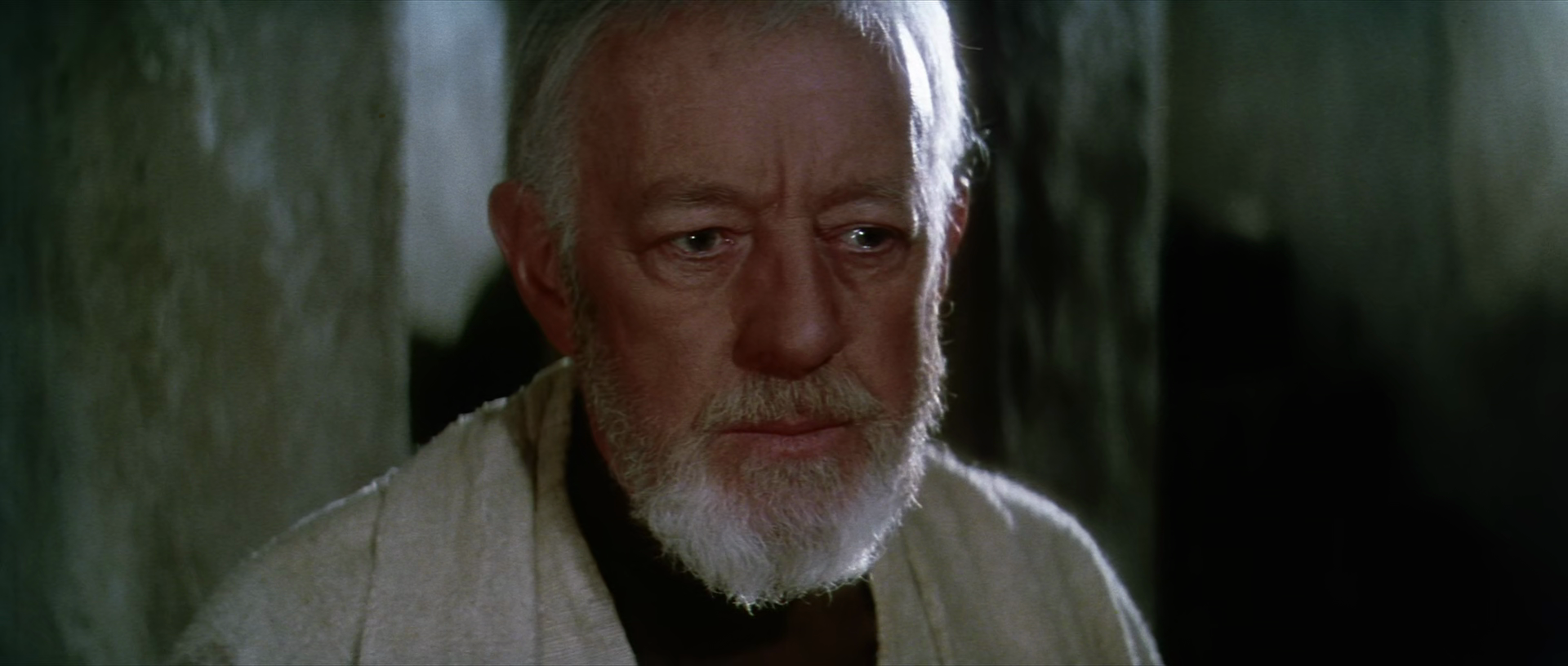
This is how Star Wars does its world building. It shows more than it tells. It throws the disparate pieces of a puzzle at us and trusts us to put them together, for not even the puzzlemaker is sure of what the full picture entails.
Faster, More Intense!
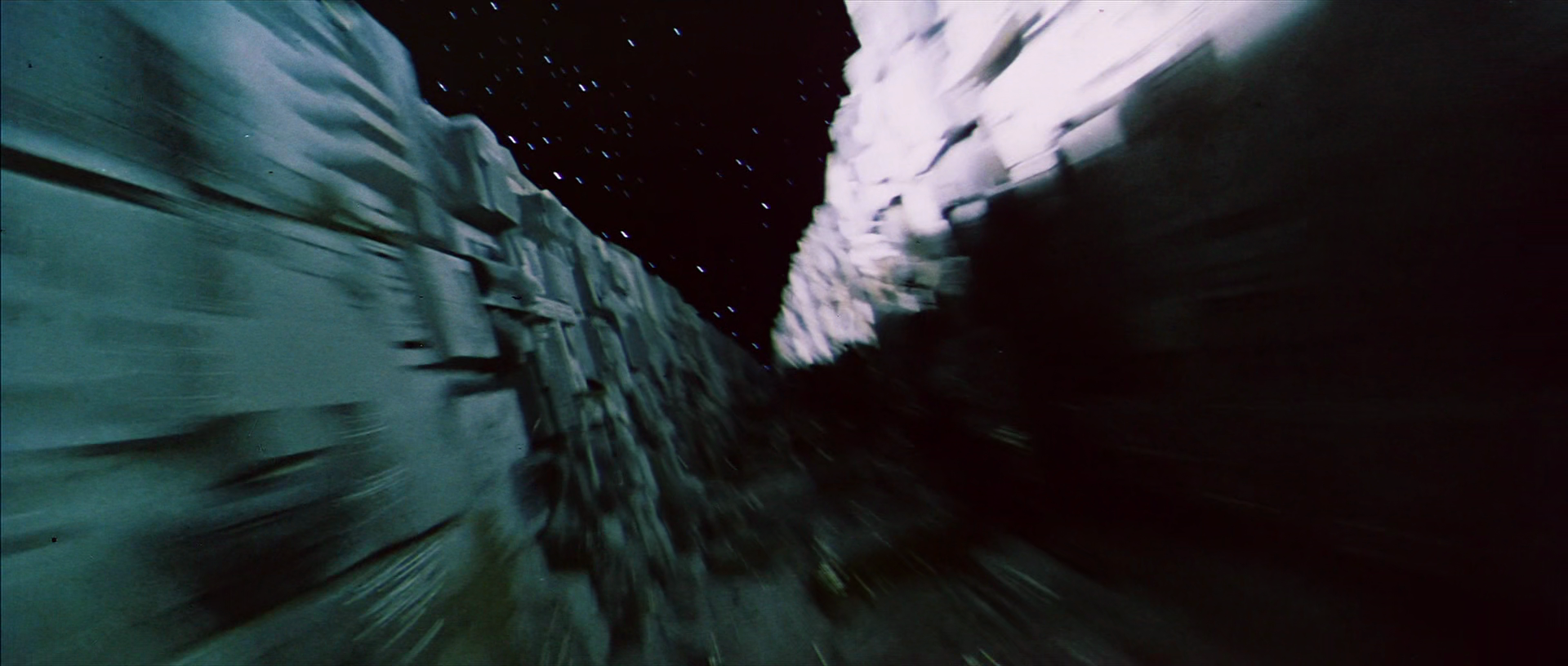
The minute the Millenium Falcon flies out of Docking Bay 94, the movie begins putting the pedal to the metal. Asides from a wonderful little scene in which the main characters hang out in the Millenium Falcon following their narrow escape (where Luke practices with the lightsaber, the droids and Chewbacca play chess and Han lazily dismisses the Force), events start to happen in quick succession. The Death Star blows up Alderaan. The Millenium Falcon discovers that Alderaan has been blown up, before immediately getting tractor-beamed by the Death Star. Luke finds out Princess Leia is on the Death Star and immediately launches a rescue. Obi-Wan fights Darth Vader and gets killed. The gang narrowly escapes on the Millenium Falcon, and without a single moment to reflect on the loss of an ENTIRE PLANET or the death of a beloved mentor, Luke is jumping into his X-Wing and going off to blow up the Death Star. And then it’s back to the Rebel base for a cheesy awards ceremony devoid of any dialogue. Roll credits.
It becomes incredibly apparent why this was the sort of movie that people would flock to the cinemas to watch repeatedly, because it is a motion picture that truly moves once you get past the first 30 minutes. But as I mentioned, even the slower first act is always engaging because it is so rich in detail and subtle world-building that your mind is always thinking and dreaming about its intricacies.
Yet it’s not the kind of film which uses its fast pace to hide any inadequacies or poorly thought-out plot points. In fact, the more you watch the film the more details you pick up, and you think to yourself, “How did I miss that the last time?” The film critic Pauline Kael famously never watched a movie more than once, and wondered how other critics could do it without absolutely hating the movie. Yet I think the best movies become all the richer upon repeat viewings. We notice more about the Jawa’s nomadic way of life, and how they are only slightly higher up the food chain compared to droids. We notice more about the in-universe politics, with a few throwaway lines of dialogue revealing that the Empire went from being a faux-democratic government to being a full-on authoritarian state all within the span of this film (at the beginning of the film the Imperial officers were still concerned about the Rebels gaining sympathy within the Senate, but during the second act Grand Moff Tarkin announces that the Emperor has dissolved the Senate). We notice how Uncle Owen is concerned that Luke will become just like his father, exchanging dark looks with Aunt Beru. Every viewing yields something new, and even after getting used to the film’s fast pace and knowing all the story beats by heart, the most ardent Star Wars fan never tires of this film.
More than just a popcorn flick?
“Movies are hardly ever about what they seem to be about. Look at a movie that a lot of people love, and you will find something profound, no matter how silly the film may seem,” Roger Ebert wrote in 1992. In my efforts to become a more holistic appreciator of film, I also try not to dismiss movies as being “dumb” just because they are popular.
Yet even after Star Wars became a smash hit, it was never the kind of film that was taken all that seriously in film studies. Most studied it as a part of pop culture history, and not as a film. It’s easy to forget that Star Wars was one of the great contenders of the 1977 Academy Awards, and not just in the technical categories (which were all rightfully swept up by the film), but also in the categories of Best Original Screenplay, Best Director and even Best Picture. There was something profound within the film that, as Roger Ebert said, touched millions of people from all over the world.
For me, it really just boils down to the fact that good and evil are so clearly defined within the world of this film. Modern cinema is filled with so many morally ambiguous stories that leave audiences conflicted about the state of the world. Some have even accused Hollywood of promoting nihilism and making it “cool” to be bad. Even later Star Wars films complicated the scales of morality by revealing the Jedi to be flawed and complacent figures. It has become a foolish and naive thing to believe that there is good in this world.
But I think that, at the end of the day, we need this belief. We still need heroes, and while in reality the people behind the myths may not always be the paragons of goodness that they were painted as (as is often argued by historians), what matters more is what they represent and the lessons they teach us.
